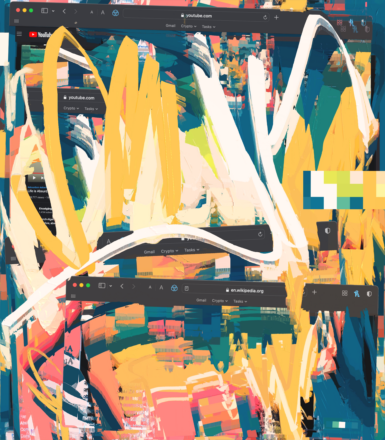NFT Briefing: Crypto Art’s Rothko
Some early pioneers of digital abstracts are already drawing comparisons to some of the all-time greats.

Key Takeaways
- Digital abstract art is a growing and important movement in NFT scene, and some early talents are showing signs of promise.
- Some artists in the space, like Jack Kaido, are already drawing comparisons to some of the all-time greats in modern art.
- Continued experimentation and diversification of the genre are further evidence that the NFT medium is here to stay.
Share this article
While it’s never really possible to know which artists or movements will succeed or fail, it can be rewarding to seek out early signs of promise outside the mainstream.
Digital Abstracts
Those who have been reading my pieces for a while will know I’m not the biggest fan of the NFT avatar scene. While I’m grateful for projects like CryptoPunks and Bored Ape Yacht Club putting NFTs on the map, I think there’s more to the technology than profile picture flexing—and sometimes I think this trend does more harm than good when it comes to converting the mainstream.
In response to avatar saturation and a slump in crypto prices, I’ve been spending as much time as possible exploring other interesting pockets of the NFT space. I think the generative art movement is fascinating, and have picked a couple of nice bits up for myself, but beyond the Art Blocks side of things, I’ve enjoyed exploring a new niche that’s gaining steam: digital abstract art.
Some of you may have heard of Jack Kaido, and if you haven’t, I think his work speaks for itself. Just take a look here:

“Trace #07 — Solver” by Jack Kaido (Source: Jack Kaido/SuperRare)
Kaido is probably the biggest name in this scene today, having sold works to whale collectors and won countless endorsements from other big NFT players. The popular fashion photographer Guido Di Salle went so far as to compare him to Mark Rothko, one of the most acclaimed color field painters in art history.
A couple of years ago, before NFTs boomed and Kaido gained wider recognition, his pieces would sell for a few hundred dollars. These days, the rarest ones fetch five figures, but if that’s too rich for your blood, there are plenty of other less-established names in this field that are showing early promise.
I like Lisanne Haack, a friend of Kaido’s, as well as recent riser omentejovem, but don’t take my word for it; if you want to build your own art collection, go out there and find the stuff you like. Trying to second guess the next trend or jump into the hottest new “community” doing the rounds is asking to fail; just look for the stuff that speaks to you.
“Flowers can be broken” by Lisanne Haack (Source: Lisanne Haack/exchangeart)
With creators like this still thriving in the depths of a brutal bear market, there is little doubt that NFT art is here to stay. When I traveled to New York last December, I saw some of Rothko’s most famous pieces in the flesh at MoMA. While none of us can predict the future, given all of the developments we’ve seen since Beeple’s $69 million auction kicked off the NFT explosion, it’s easy to imagine an abstract digital artist out there somewhere hitting Rothko levels of prestige sometime in the distant future (we probably won’t need to go to a physical gallery to see their stuff, though).

“No. 5/No. 22” by Mark Rothko at MoMA (Source: MoMA)
Will it be Jack Kaido or another name that makes waves in NFTs next? In my opinion, it’s simply too early to say. But that’s good for any art enthusiasts looking to build out their collections today. With most NFT people looking at avatars and the rest of the world tuned out, I’d say this is the perfect time to dive into niches like digital abstract art while few people are paying attention to them.
Disclosure: At the time of writing, the author of this piece owned ETH and several other fungible and non-fungible cryptocurrencies.

